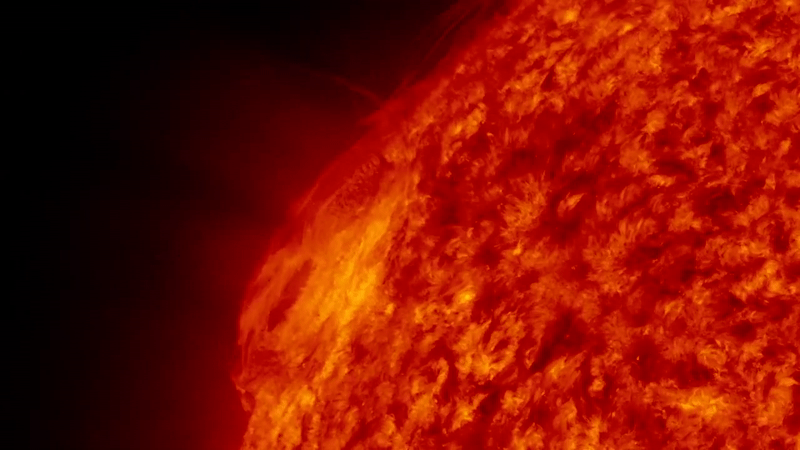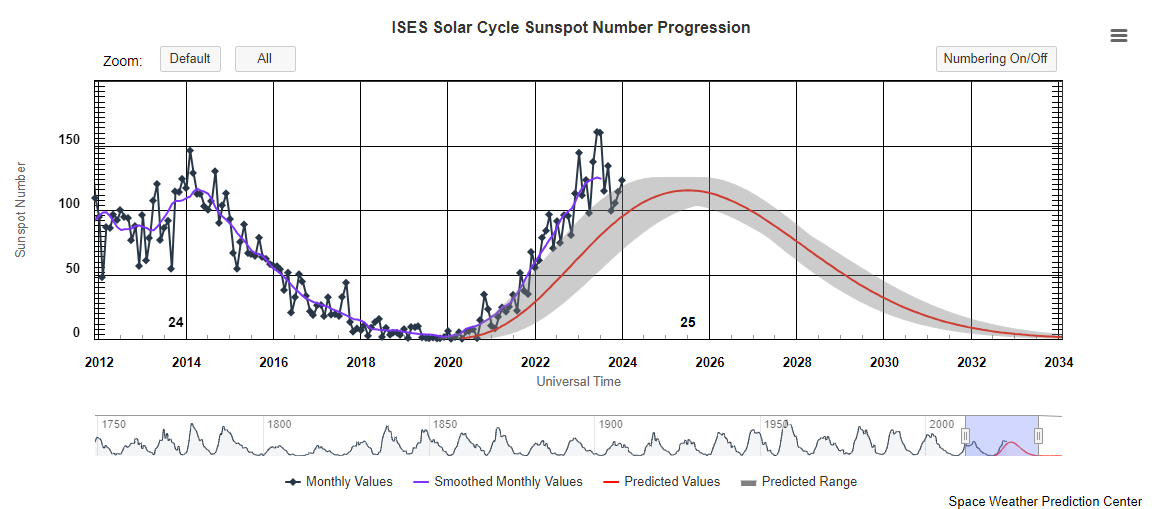Solar maximum is coming, but we won't know it happened until 7 months after it's over
Solar maximum is on the horizon, but when will it occur?

The sun has been gradually gaining strength as it nears its highest rate of activity — solar maximum — during its approximately 11-year solar cycle.
The solar cycle describes a period of solar activity driven by the sun's magnetic field and indicated by the frequency and intensity of sunspots visible on the surface.
But, scientists won't be able to ascertain whether solar maximum has occurred until at least seven months after the fact. We asked ESA's Space Weather Coordination Center's (SSCC) solar expert center why this is the case.
Related: Solar maximum: Why April's total Solar Eclipse will bring unique views of the sun's corona
"The maximum is computed (as a convention) with the 13-month smoothed sunspot number (which means that for each month you use the value of six months before and six months after)," Solar expert center scientists told Space.com in an email. "The exact value of this quantity for time T is known only 6 months later."
Scientists only know if the solar maximum was achieved in a particular month if the next month's sunspot numbers are lower, therefore it is impossible to know earlier than seven months after this decline happens.
For example, let's say solar maximum did occur in February 2024. Scientists would need sunspot number data from the previous six months, the month of February 2024 and the next six months which would take us to August 2024. So we would have to wait until September 2024 to be able to definitively declare that solar maximum had occurred in February 2024.
Get the Space.com Newsletter
Breaking space news, the latest updates on rocket launches, skywatching events and more!
ESA's solar scientists add that sometimes the sun can fool us; even when we think we have achieved solar maximum, the increased activity turns out to be only what's known as a local maxima, not representative of the entire cycle. Sunspot cycles can also experience a "double maxima," called a Gnevishev's gap, which means that the first peak might not be the highest and another large peak can follow.
All of this means we could have some time to wait before we know exactly when Solar Cycle 25's solar maximum has occurred.
As it stands, predictions from the World Data Center for the Sunspot Index and Long-term Solar Observations (SILSO) at the Royal Observatory of Belgium indicate a maximum between mid-2024 and the end of 2025. Meanwhile, NOAA's Space Weather Prediction Center (SWPC) estimates that solar maximum could occur between late 2024 and early 2026.

There is a good chance that solar activity is still on the rise according to the SSCC scientists. This is great news for those wishing to see the northern lights, or aurora borealis,as their occurrence is dependent on solar activity. The more active the sun, the higher the chance of vibrant aurora shows making the next few years the best time to plan a trip to see the northern lights.
Auroras are triggered when energized particles from the sun's solar wind are deflected towards Earth's poles by our planet's magnetic field. The energized particles then interact with atoms and molecules in our atmosphere, depositing energy, causing our atmosphere to fluoresce. The different aurora colors are dictated by the chemical composition of Earth's atmosphere.
If you're unable to see the northern lights during the solar maximum period over the next few years, don't worry. Auroras never stop. They can be seen throughout the solar cycle even during periods of solar activity. This is because weak to moderate coronal mass ejections associated with filament eruptions persist throughout the whole cycle, and maintain the "background" geomagnetic activity that triggers auroras.
Join our Space Forums to keep talking space on the latest missions, night sky and more! And if you have a news tip, correction or comment, let us know at: community@space.com.

Daisy Dobrijevic joined Space.com in February 2022 having previously worked for our sister publication All About Space magazine as a staff writer. Before joining us, Daisy completed an editorial internship with the BBC Sky at Night Magazine and worked at the National Space Centre in Leicester, U.K., where she enjoyed communicating space science to the public. In 2021, Daisy completed a PhD in plant physiology and also holds a Master's in Environmental Science, she is currently based in Nottingham, U.K. Daisy is passionate about all things space, with a penchant for solar activity and space weather. She has a strong interest in astrotourism and loves nothing more than a good northern lights chase!
-
Steven Smythe PhD Um, no. This is only true if you use the strict definition which includes data smoothing. It's not "impossible" as the article states. You will know in raw data in the following month, if activity is trending upward or downward, in two months it will show a trend. Don't lose sight of the trees for the forest.Reply -
LadyDefi Just shows government scientists are not that smart. When it really warms up in winter then you will know.Reply









